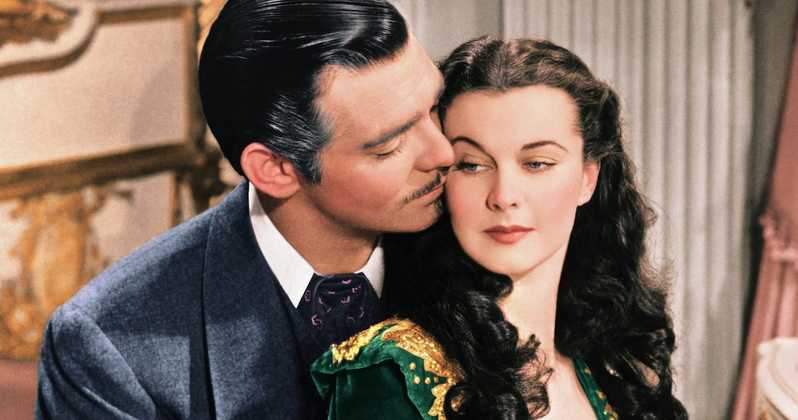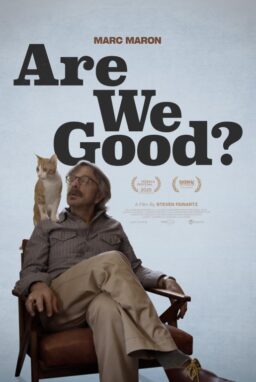I really thought that revisiting “Star Trek: The Next Generation” was going to be as rewarding as “Star Trek: Deep Space Nine.” I was never that into “TNG” when it first aired, but since it takes place in the same timeline as “DS9” and it’s spawned so many memes, I gave it a shot.
I’m well aware that most shows from that era take about three seasons to find their footing, but I was ready to throw in the towel after the “Angel One” episode from the first season in January 1988. In it, writer Patrick Barry and director Michael Ray Rhodes explore Reverse Sexism Theory by way of the eponymous matriarchal planet. The episode was apparently intended as an Apartheid allegory, but its clumsy execution also made it clear that certain men can’t possibly imagine a world not only ruled efficiently by women, but where women also do something entirely different with the power men are used to having.
Looking back on a lot of art that came before, say, 2016 is consistently disappointing. Which isn’t to say that’s not still the case, but now we’re calling shit out. Now our vocabulary around the disparities in gender and racial representation isn’t just more precise, it’s also taken seriously. A logical side-effect is that watching problematic cinema and TV becomes even more grating.
So let’s make this the new default setting:
NOTHING HAS AGED WELL!
With that out of the way, how do we deal with it? Do we stop watching anything that predates a certain era or was made by someone who turned out to be a predatory asshole? Can we even change what our faves are?
I have a few reflections to offer.

Getting Used to the Discomfort of a New Lens
I’m embarrassed and ashamed to admit that “Gone with the Wind” was one of my faves for a long time. Like a lot of white feminists, I overlooked the film’s romanticizing and veneration of slavery to make room for what I thought was a complicated, kick-ass woman. I focused on Scarlett because that’s what the movie wanted us to focus on and it was good at encouraging us to ignore the terrible things. Also: it was convenient to ignore the terrible things.
Those of us who blissfully looked the other way were taken to task a few years ago, so if you catch the movie on HBO Max now, it comes with an intro by historian Jacqueline Stewart addressing the film’s racist legacy. She doesn’t mince words, either: “The film represents enslaved Black people in accordance to longstanding stereotypes: as servants, notable for their devotion to their white masters or for their ineptitude. And the film’s treatment of this world through a lens of nostalgia denies the horrors of slavery, as well as its legacies of racial inequality.”
The intro makes me feel a little less at ease watching the movie after, and maybe that’s the goal. It doesn’t matter that “GWTW” didn’t deliberately set out to create an uncomfortable viewing experience; the movie exists because of a hell of a lot of discomfort imposed on its Black cast members and Black audiences, while white people were spared any malaise for most of the film’s history.
At the time of this writing, it was announced that Jacqueline Stewart would be participating in the new Reframing Classics series on TCM, which will discuss 18 films made between the 1920s and 1960s that also happen to be problematic. “GWTW” will be included, as will “Breakfast at Tiffany’s” and “Swing Time.” Stewart explains to the LA Times that the point isn’t to make people hate the movies they love, “we’re just trying to model ways to have longer and deeper conversations,” she says.
These conversations actually help me want to know more about the art. So even if I can’t look at it the same way as I did before, I develop a more profound understanding of it, and that makes it infinitely more interesting.
It’s okay for our relationship with art to change. Some works are deemed too shocking and controversial when they first come out. Sometimes the shock and controversy come after. We’re not really engaging with art if we insist that its significance and greatness are sacrosanct.

Better Dead or Fired?
A few years ago, I published a piece on this site about my decision to stop watching Woody Allen movies because I believe he sexually assaulted Dylan Farrow when she was a child. A “friend” read the headline and predictably mocked what he assumed was my argument. What about Mozart, Jim Morrison, Picasso, he asked, are we going to cancel them wholesale because they were assholes too?
And it’s true, they were assholes too. But they’re also dead assholes and incapable of causing anyone more pain.
I don’t know if this means that Woody Allen movies will suddenly become more palatable when he dies. But I’ll probably feel better about watching them then because his movies won’t personally profit him any longer, and that matters.
Lindy West argued in the New York Times that it’s important for unrepentant sexual predators to lose their livelihoods while they’re able to feel the sting of it. The justice system rarely punishes these guys, but firing them pretty effectively strips them of their power.
Still, Fran Lebowitz doesn’t believe that means we should stop consuming the art of disgraced artists. In the brilliant Martin Scorsese-directed “Pretend It’s a City,” Lebowitz, referring to author Henry Roth and former Met conductor James Levine, says she compartmentalizes so as not to deprive herself of good art. “Firing people from their jobs … that is something that should be done if people do horrible things,” she says. “But not reading people’s books or listening to their music? It seems pointless to me.”
Honestly? Separating the art from the artist seems much easier and much more fun. Maybe if the artist isn’t dead but they’re at least fired, it’s okay. Maybe it doesn’t serve them as much if they’ll never work again anyway. It also means we don’t punish those who worked on the art with them, because not everyone is complicit in these things.
I’m not imploring you to pick between me and Lebowitz, because obviously she wins. I’m saying that if you’re going to consciously consume problematic art, make sure you’re completely at peace with who benefits from it. Me? I haven’t found that peace with Allen yet.

Who Gets to Make Art
It’s a fool’s errand to look to the past and hope it produces results that are acceptable by today’s standards. But we absolutely need to look to the past with the lens of the present and name the ugliness by its various names, because that’s how we fix tomorrow.
And in the present and future, we have the power to make sure that those creating art treat the people around them decently and don’t use their privilege to exploit or abuse their employees. We can actively put measures in place to protect those employees and deter assholes from thriving to begin with. We can make sure that the stories we tell are inclusive and diverse by hiring people from a variety of backgrounds to tell them.
We can acknowledge that we’re hiring them not because it’s politically correct in a pejorative sense, but because the past was completely imbalanced—tipped disproportionately in favor of cis white men—and now we’re redistributing the weight. We should also frequently talk about how lately, storytelling has gotten richer, and it’s no accident that this coincided with small but meaningful steps to include more diversity in front of and behind the camera.
And I’m really excited about what’s coming, because we now have trans contestants on “RuPaul’s Drag Race,” because Ava DuVernay runs a lucrative production company, because America Ferrera is creating Latinx shows, because “Parasite” won all of last year’s most significant Oscars, because “The White Tiger” was better than “Tiger King,” because I can’t wait to see “Raya and the Last Dragon,” at least in part because Kelly Marie Tran—not the trolls J.J. Abrams didn’t have the stones to ignore—emerged with all the dignity. And also because of “Star Trek: Discovery,” which checks a lot of boxes (sometimes a little awkwardly) and would never, ever try to tell us that the only place women can be in charge is on a topsy-turvy planet.












